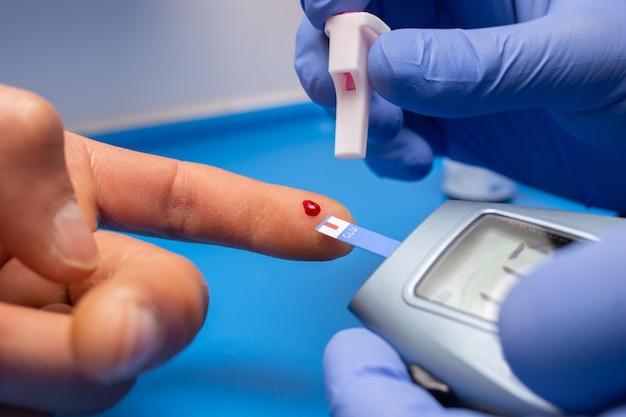Introduction

There are many rare diseases in the world, some of which are still poorly understood by the medical community. One such disease is VEXAS syndrome, a recently discovered and named condition that affects the immune system and causes widespread inflammation in the body. VEXAS stands for Vacuoles, E1 enzyme, X-linked, Autoinflammatory, and Somatic syndrome. It is a complex and potentially life-threatening disease that can affect various organs and tissues, such as the skin, lungs, joints, blood, and bone marrow. In this post, we will explore what VEXAS syndrome is, what causes it, how it is diagnosed, and how it is treated.
What Is VEXAS Syndrome?

VEXAS syndrome is a rare autoinflammatory disease that was first described by a team of researchers from the National Institute of Health (NIH) in 2020. They identified 25 patients with a similar set of symptoms and signs that did not fit into any known diagnosis. They also found that these patients had a mutation in the UBA1 gene, located on the X chromosome, which is involved in regulating the immune system. The mutation causes the accumulation of abnormal proteins that trigger an inflammatory response in the body. This leads to recurrent episodes of fever and inflammation that damage various tissues and organs.
VEXAS syndrome is classified as a somatic disease, which means that the mutation is acquired during the persons lifetime and is not inherited from the parents. It is also an X-linked disease, which means that it is more likely to affect males, who have only one X chromosome. However, some females may also have VEXAS syndrome, either due to random X chromosome inactivation or having two copies of the mutated gene.
What Are the Symptoms of VEXAS Syndrome?

VEXAS syndrome can cause a range of symptoms that vary in severity and frequency. Some of the most common symptoms include:
Fever:
Patients with VEXAS syndrome may experience recurrent or persistent fevers that are often accompanied by chills, sweats, and malaise.
Weight loss:
Patients with VEXAS syndrome may lose weight unintentionally due to the chronic inflammation and reduced appetite.
Fatigue:
Patients with VEXAS syndrome may feel tired and weak due to the inflammation and anemia.
Respiratory issues:
Patients with VEXAS syndrome may develop inflammation in the lungs, causing shortness of breath, cough, chest pain, and pulmonary fibrosis.
Skin lesions:
Patients with VEXAS syndrome may develop painful rashes, papules, or nodular lesions on the skin, especially on the lower legs, arms, and face.
Joint pain and swelling:
Patients with VEXAS syndrome may experience inflammation in the joints, causing pain, stiffness, and swelling, especially in the knees, ankles, elbows, and wrists.
Ear and nose problems:
Patients with VEXAS syndrome may have inflammation in the ear and nose, causing hearing loss, tinnitus, ear pain, nasal congestion, and sinusitis.
Bone marrow abnormalities:
Patients with VEXAS syndrome may have reduced production of blood cells in the bone marrow, leading to complications such as anemia, low platelets, and increased risk of infections and bleeding.
How Is VEXAS Syndrome Diagnosed?
VEXAS syndrome can be difficult to diagnose because its symptoms may mimic those of other conditions, such as rheumatoid arthritis, lupus, sarcoidosis, or vasculitis. To diagnose VEXAS syndrome, doctors may perform the following tests:
Blood tests:
Blood tests can reveal signs of inflammation, such as elevated levels of C-reactive protein (CRP) and erythrocyte sedimentation rate (ESR). They can also detect abnormalities in the blood cells, such as low hemoglobin, low platelets, or high white blood cells. Blood tests can also confirm the presence of the UBA1 gene mutation, which is the definitive marker of VEXAS syndrome.
Biopsy:
A biopsy is a procedure that involves taking a small sample of tissue from the affected organ or tissue, such as the skin, lung, or bone marrow. The sample is then examined under a microscope to look for signs of inflammation and abnormal protein accumulation. A biopsy can help rule out other causes of inflammation and confirm the diagnosis of VEXAS syndrome.
Imaging tests:
Imaging tests, such as X-rays, CT scans, or MRI scans, can help visualize the extent of inflammation and damage in the organs and tissues, such as the lungs, joints, or bones.
How Is VEXAS Syndrome Treated?
There is no specific cure for VEXAS syndrome at present, but treatment focuses on alleviating symptoms and improving quality of life. Treatment may involve the following options:
Immunosuppressive medications:
These are drugs that help suppress the overactive immune system and reduce inflammation. Some of the commonly used immunosuppressive medications for VEXAS syndrome include methotrexate, azathioprine, cyclophosphamide, and tocilizumab. These drugs may have side effects, such as increased risk of infections, liver damage, or bone marrow suppression, and require regular monitoring.
Corticosteroids:
These are drugs that help control inflammation and provide relief from symptoms, such as fever, pain, and swelling. Some of the commonly used corticosteroids for VEXAS syndrome include prednisone, methylprednisolone, and dexamethasone. These drugs may have side effects, such as weight gain, high blood pressure, diabetes, osteoporosis, and mood changes, and require careful dosing and tapering.
Supportive therapies:
These are therapies that help manage the complications and improve the function of the affected organs and tissues. Some of the supportive therapies for VEXAS syndrome include respiratory support, such as oxygen therapy or mechanical ventilation, for lung problems; pain management, such as analgesics or anti-inflammatory drugs, for joint and skin problems; and blood transfusions or iron supplements, for anemia.
Conclusion
VEXAS syndrome is a rare and mysterious autoinflammatory disease that causes recurrent episodes of fever and inflammation, affecting various organs and tissues. It is linked to a genetic mutation on the X chromosome and is more common in males. The symptoms of VEXAS syndrome may resemble those of other conditions, making it challenging to diagnose. The treatment of VEXAS syndrome aims to reduce inflammation and improve quality of life, but there is no cure for the disease. VEXAS syndrome is a complex and potentially life-threatening condition that requires close monitoring and multidisciplinary care. If you or someone you know has symptoms of VEXAS syndrome, seek medical attention promptly and consult a specialist.







